Chlorine Analyzer for Residual Chlorine Monitoring – HaloSense
Free Chlorine and Total Chlorine analyzer and controllers measure the free residual chlorine (OCl– and HOCl), and the total residual chlorine (free chlorine + combined chloramines). The Pi residual chlorine analyzers are amperometric membraned sensors that bring a number of advantages over traditional colorimetric analyzers, in that they are cheaper to own with no reagants and very little maintenance (once per year).
They are extremely stable and work almost anywhere you have a need to measure residual chlorine from drinking water, to pools and spas, produce washing, cooling tower disinfection and disinfection in paper and pulp industries.
Residual Chlorine Analyzer - 3D View
- Low purchase cost
- Low cost of ownership
- Reduced pH dependency (largely pH independent)
- Stable and reliable
- Bufferless
- Reagentless
Many companies want to measure free chlorine residuals without the need for chemical buffers and reagants traditionally associated with measuring chlorine in water. Acetate and phosphate buffers are expensive and environmentally unfriendly. Buffer delivery systems are maintenance intensive and have fairly costly consumables and there are health and safety considerations in the handling of the acids and high disposal costs if the acid treated water is unable to be fed back into the water supply.
That leaves colorimetric analyzers that mix chemicals with the water which changes color and the resultant color is related to the residual chlorine. Whilst still popular issues with reagant cost, optical fouling and the length of time between reporting results means that these analyzers are increasingly out of favor.
Most amperometric cells and polarographic probes only respond to hypochlorous acid, (HOCl). HOCl dissociates into hypochlorite (OCl–) in a pH dependent manner. This is why most chlorine monitors need acid buffers in most applications. The typical pH of water measured on a water treatment works may range from 7 to 9.2. Chemical buffering reduces the pH to between 5 and 6 and ensures that the majority of the residual chlorine is present as HOCl.
The HaloSense Free Chlorine Sensor from Pi measures all the HOCl and the majority of the OCl– present. This results in a vastly reduced pH effect and means that most chlorine monitoring applications require no buffer and no pH compensation at all.
Need help with an application? Click here!
- Continuous online monitoring for residual chlorine in any water
- Water treatment plant residual chlorine
- Secondary chlorination
- Distribution monitoring
- Cooling tower monitoring and control
- Pasteurizer dosing control
- Seawater chlorination
- Bromine monitoring in seawater
- Food washing and food container washing
- Chloramination control (MCA) in paper and pulp
The HaloSense chlorine monitor range is particularly suited to working in sites where reliability and ease of use are most important.
The following are available in the HaloSense range;
- Online free chlorine – 0.005-2ppm, 0.05-5ppm, 0.05-10ppm, 0.05-20ppm, 0.5-200ppm
- Online total chlorine – 0.005-0.5ppm, 0.005-2ppm, 0.05-5ppm, 0.05-10ppm, 0.05-20ppm
- Online residual chlorine in seawater analyzers (free or total bromine) – 0.005-2ppm, 0.05-5ppm, 0.05-10ppm, 0.05-20ppm
- Online zero chlorine (designed to measure the absence of free chlorine) – 0.005-2ppm for applications such as post activated carbon and pre-RO monitoring.
Other options include;
- AutoFlush – The HaloSense sensors can come equipped to automatically clean themselves at user defined intervals, with all the benefits of no operator intervention for up to 6 months. The AutoFlush is particularly useful in food preparation, pulp and paper, and many applications where there is likely to be a build up of solids in the sample. For more information about AutoFlush click here
- Communications – The CRONOS® and CRIUS®4.0 free and total residual dosing controllers can be equipped with four PID process control options, data-logging, relay outputs, analog outputs and serial communications such as: Ethernet, Modbus and Profibus. Remote monitoring of the instruments (including remote access to all control options) is available via the internet over GPRS and via a LAN. In fact the CRIUS®4.0 HaloSense monitor has all the options you could want, whilst the CRONOS® provides a low cost alternative and is particularly great value for money!
- Control – Each Residual Chlorine Analyzer from Pi has the capability to be an extremely capable Chlorine Controller. The controllers can have multiple control channels which can utilize chemical control (usually a relay (switch) turns dosing on when the chlorine is too low or off when it is too high) or PID control. PID stands for Proportional Integrated Derivative and it is a mathematical manipulation of the sensor signal to give an output that will control a pump and manage a constant chlorine level in the water. All the features are adjustable and there are safety features built in such as overfeed protection. For a discussion of PID control please see our technical notes here.
The membraned amperometric sensors are enhanced with a third, reference electrode which eliminates zero drift. (NB. These chlorine sensors are often known as polarographic sensors although this is a misuse of the word polarographic). Its unique design means that pH compensation is not usually required at all, completely eliminating reagents.
The free chlorine sensors used by the analyzers are largely pH independent meaning that the measurements are bufferless and reagentless. They are amperometric sensors and show remarkable sensitivity and stability. For those needing to measure chlorine at high pH (>pH 8.5) on variable pH water, it is possible to provide pH compensation from either a pH sensor connected to the transmitter or from an external pH meter.
The sensors work by separating the electrodes that perform the measurement from the sample, by a membrane. This membrane allows the free residual chlorine (HOCl and OCl–) or the total residual chlorine (HOCl and OCl– plus chloramines) through the membrane. Inside the sensor the dissolved chlorine meets the electrolyte which is at a low pH. This converts the majority of the OCl– to HOCl. The HOCl is reduced at the gold working electrode and the current generated is proportional to the chlorine present, and the instrument gives a reading in ppm or mg/l.
This technique is the most advanced method of continuous chlorine measurement and has many benefits to the user including a very stable online measurement and better dosing control.
The HaloSense range is bufferless and reagent free, meaning that it has a low total cost of ownership and with maintenance intervals of 1 year. HaloSense is fast becoming the instrument of choice for the engineer who wants the best instrument at the best price.
Focus Ons are a series of short articles distributed by email providing technical information regarding instrumentation, process measurement in potable, waste, process and pool waters. If you would like to join the mailing list, please contact us.
>> Small Water Treatment Plant Monitoring for Chlorine, pH and Turbidity
>> Using Open Flow Cells with Membraned Sensors
| Document | Type | Size |
|---|---|---|
| HaloSense | Brochure | 724kb |
| HaloSense Zero | Technical Note | 606kb |
| HaloSense Hints and Tips | Technical Note | 606kb |
| Seawater Chlorination | Technical Note | 710kb |
| ORP vs. ppm | Technical Note | 534kB |
| pH Effects on Pi’s Free Chlorine Sensor | Technical Note | 702kb |
| pH Compensation of a Residual Chlorine Measurement | Technical Note | 540kb |
| Free Chlorine Probe Maintenance | Technical Note | 658kb |
| Total Chlorine Probe Maintenance | Technical Note | 689kb |
| Using Open and Closed Flow Cells with Membraned Sensors | Technical Note | 762kb |
| DPD Checklist | Technical Note | 487kb |
| Probe Fouling | Technical Note | 459kb |
Chlorine Monitor FAQs
What does ‘Residual Chlorine’ mean?
After chlorine has been added and disinfected the process water, any surplus chlorine that remains is referred to as ‘Residual Chlorine’.
What does 'Free Chlorine' mean?
When added to pure water, chlorine is present as hypochlorite (OCl–) and hypochlorous acid (HOCl). Together these are referred to as ‘free chlorine’.
What does 'Combined Chlorine' mean?
‘Combined’ chlorine collectively refers to three chloramine compounds: monochloramine, dichloramine and nitrogen trichloride. Monochloramine is formed from the reaction of hypochlorite and ammonia:
NH3 + OCl– → NH2Cl + OH–
If the conditions are acidic, further reactions occur that form dichloramine and nitrogen trichloride:
2NH2Cl + H+ → NHCl2 + NH4+
3NHCl2 + H+ → 2NCl3 + NH4+
The familiar ‘chlorine smell’ is often due to these chloramines rather than ‘actual’ chlorine.
What does 'Total Chlorine' mean?
Free chlorine and combined chlorine in water can be collectively referred to as ‘total chlorine’. It can be thought of as ‘free chlorine + combined chlorine = total chlorine’.
What sensor ranges are available?
Our free and total chlorine sensors can be ordered in 0.005-2ppm, 0.05-5ppm and 0.05-20ppm ranges. The total chlorine sensor can also be provided with a range of 0.005-0.5ppm, and our free chlorine sensor is also available in a 0.5-200ppm version.
Is it possible to measure chlorine in seawater?
The simple answer is ‘yes’, but when chlorinating seawater a displacement reaction occurs due to the presence of bromine compounds in seawater. Using chlorine to disinfect seawater is common, but we would recommend talking to a member of our team or reading this Technical Note so that the correct instrumentation can be supplied.
How often does my sensor need calibrating?
Our chlorine sensors have a very low rate of drift, so the frequency of calibration depends upon the needs of your application. Different customers are known to calibrate weekly, monthly or even biannually.
How often does the chlorine electrolyte need to be replaced?
Changing the electrolyte annually is recommended for our Total and Free Chlorine sensors, and every 3-6 months for our Zero Chlorine sensor.
If the pH changes, will it affect my chlorine reading?
Are there any interferences?
There are known interferences with chlorine dioxide and ozone. A member of our team will be happy to discuss this with you; click here for more information.
How long can the membranes and electrolyte be stored?
Both the membrane and the electrolyte can be stored for two years in a cool, dry place.
What are the MoCs?
All three sensors are constructed of stainless steel, PVC-U, silicon and hydrophilic membrane. The Total and Zero sensors also contain PEEK.
What the temperature range will the chlorine sensor work in?
0 – 40°C for the Zero sensor, and 0 – 45°C for the Free and Total sensors.
Why does the chlorine sensor have no zero adjustment?
A zero adjustment is not necessary because the sensor always operates at a positive voltage. Because of this any drift on the zero is negligible compared to the operating voltage.
If the temperature varies, what will happen?
Our sensors have an internal thermistor that allows for automatic temperature compensation, so there is no need to worry about temperature variation.
What is the best way to calibrate my sensor?
Many of our customers use handheld meters to determine the chlorine concentration for calibration, generally using colorimetric DPD analysis. These are available from a wide variety of suppliers.
I am going to take a sample to do a test. What do I need to be aware of?
Three things; timing, location and execution. Take your sample when the concentration is varying as little as possible, take it from the same location as the sensor and follow the instructions for your handheld device carefully.
During the calibration process, the analyzer has warned me that the sample isn't stable. Why?
The analyzer monitors the stability of the probe signal during the calibration process. If this varies by more than 10% during the calibration countdown, then the analyzer will not accept the result. This is to prevent the calibration routine from introducing inaccuracies into the sensor reading.
"The Pi products provide excellent value for money and represent the best municipal drinking water analyzers available."
John Clark
Chemtrac - Atlanta
"The support from Pi and its partners is superb. They go above and beyond to ensure that, not only is their equipment perfect but that the process is working great too. Five Stars!"
Anthony Glitto
Equip Solutions - Illinois, USA
"Going from ORP control to amperometric chlorine sensor control has undoubtedly improved the pool water immensely!"
Chris Tedeschi
Link Automation - USA
"We've been using these analyzers since 2008. They're easy to use and very stable. Calibration and maintenance is quick and simple."
Lloyd Gruginski
Chehalis WTP - Chehalis, WA
"We at Scottish Water have been using the excellent Pi LabSense 3 and portable UV254 instruments in the field for optimizing our Water Treatment processes for some years now. We find them easy to use and invaluable for detecting and resolving issues in a timely, efficient and effective manner. Two great pieces of kit!”
Paul Weir
Scottish Water - UK
"I want to thank you and all at Process Instruments for all the assistance, information and handholding during the year. The help that was so freely given was very much appreciated. Can you please extend my appreciation to all at Pi and let me wish you all a happy, safe and wonderful Christmas and I look forward to working with you again in 2021."
Michael Bailey
Wexford Co. Co. - Ireland
"Excellent level of support and always so much more prompt than a lot of our suppliers."
Phill Tuxford
Detectronic - UK
"The plant can’t produce good quality water without the CoagSense."
Mick Murphy
Wexford Co. Co. - Ireland
"We started using Process Instruments 10 years ago and they worked so well that when we were looking at expanding, Process Instruments were our "go to" company."
Rebecca - Pool Manager
Woodland Spa - Burnley, UK
"We've been installing pools and spa controllers from Pi for more than 10 years and they just are the best on the market."
Dr. Lester Symmonds
Pool Sentry - UK
"We've used the CRIUS® with chlorine, pH and conductivity sensors for several years and confirm quality, performance and reliability has been wholly satisfactory to date."
David Kerr
Karis Technical Services Ltd. - UK
"We in ECM ECO Monitoring can only recommend Process Instruments products and services to all other potential clients. They have very complex portfolio of products for water quality monitoring in various types of industries, friendly attitude, very quick delivery time and prompt reaction to all our needs and inquires. Our clients especially appreciate the particle counters and sizers allowing identification of drinking water treatment problems. The Streaming Current Monitors are a great tool for optimisation of expensive chemicals.”
Branislav
ECM ECO Monitoring - Slovakia
"Simply the best turbidity available."
John Clark
Chemtrac - Atlanta, GA
"In 2019, we purchased 29 particle counters which were installed in our water plants. So far, their performance has been perfect."
Li Yongjun
Jinan Hongquan Water Company - China
"We have installed hundreds of ozone analyzers from Pi over the years. They are just accurate, reliable and require low maintenance."
Jiao Tumei
Qingdao Guolin Environmental Technology Co., Ltd., - China
"Over the last few years we've purchased chlorine and turbidity analyzers from Chemtrac and with routine calibration the probes measure the chlorine and turbidity without any issue. We are very happy with this product and would highly recommend them."
Daniel "Buck" Owen
Ocoee Utility District - Ocoee TN
“Servicing customers is much more than just solving problems or addressing complaints and Pi does that very competently with technical and quick efforts providing a good experience."
Clovis Tuchapski
Buckman - Latin America
"Pi's technical team has enabled us to be one step ahead of our competitors by adding value to our projects thanks to their fast and excellent support from the moment you first reach out.
Ibrahim Kaplin
Thermomed - Turkey
"The Streaming Current Monitor from Pi is the best SCM I have ever used. The analyser responds quickly and has many powerful functions, which helps me save a lot of money."
Ye Yancong
Xiamen Xishan Water Plant - China
“Process Instruments has a broad range of high quality and user-friendly solutions for water-industry problems. The short lead times and great customer support make Pi a reliable partner.”
Péter Szabó
SC KATALIN NOHSE CHIMIST IMPORT SRL - Romania
"Process Instruments UK always have a high level of customer service. All our interactions with Pi have exceeded our expectations. It is always a pleasure working with you.”
Iñaki Seisdedos Rodríguez
Izasa Scientific - Spain
"Process Instruments UK always have a high level of customer service. All our interactions with Pi have exceeded our expectations. It is always a pleasure working with you.”
Rudi Tuffek
Allpronix - South Africa









